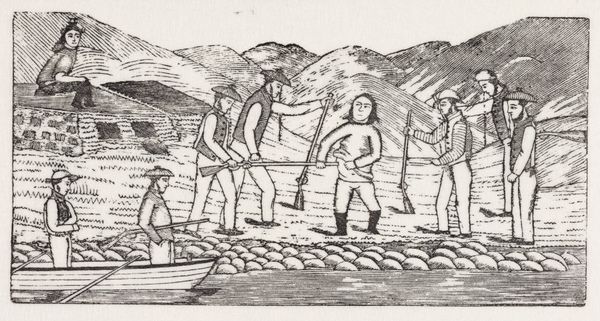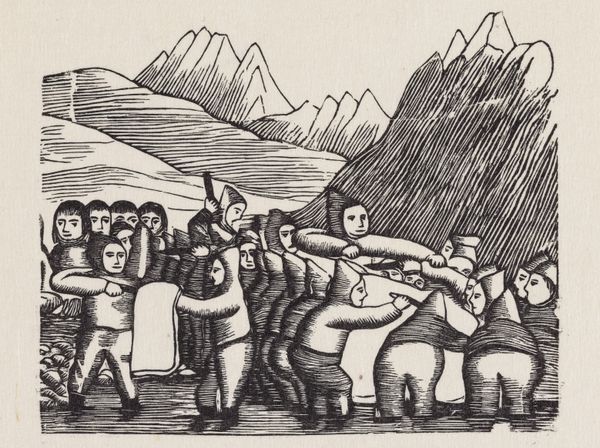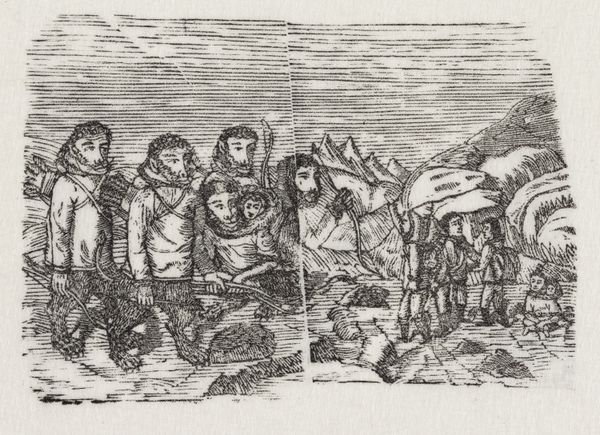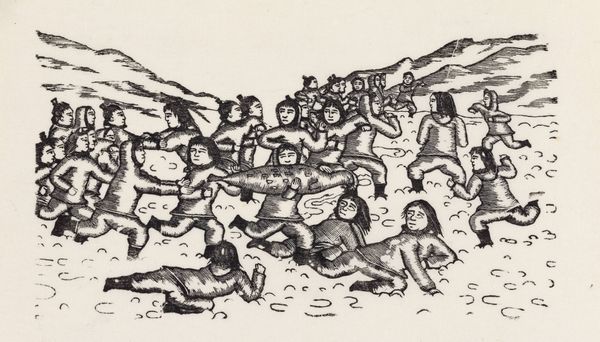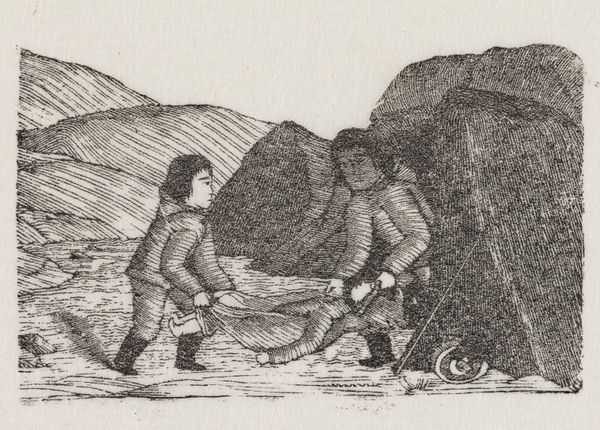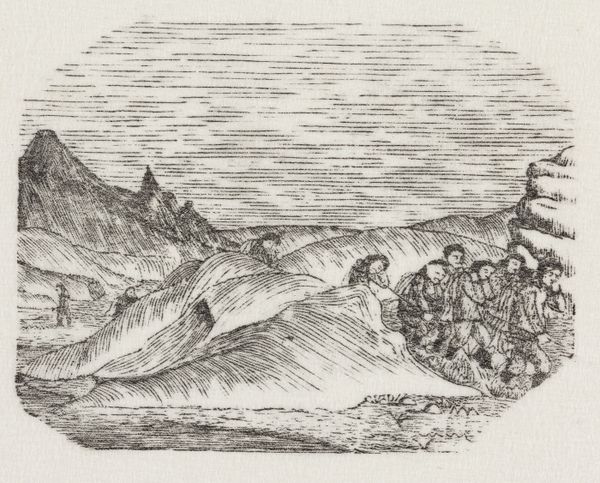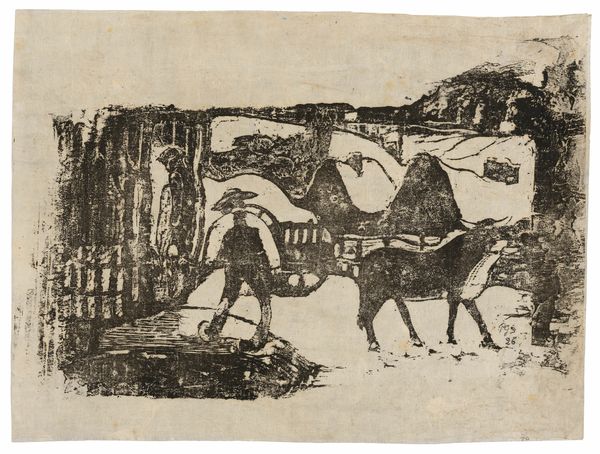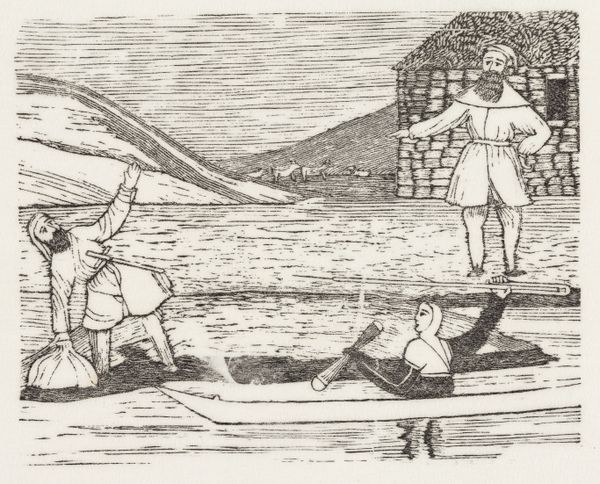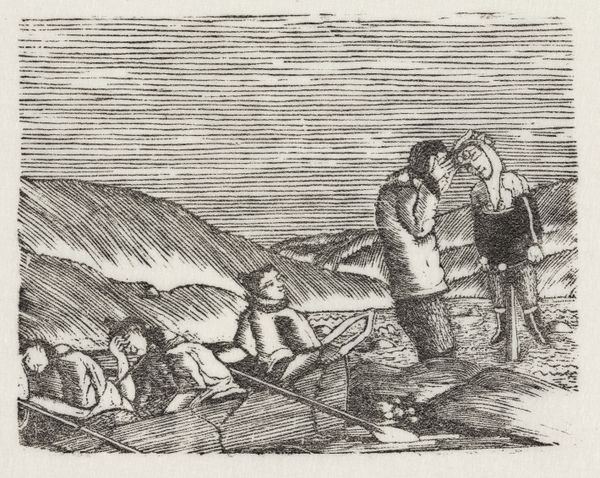
Fortællingen om Kênake den ubeskuelige: Den usynlige Kênake driver gæk med hvalfangerne, sin faders drabsmænd 1859 - 1860
0:00
0:00
print, paper, woodcut
#
narrative-art
# print
#
paper
#
woodcut
#
indigenous-americas
Dimensions: 89 mm (height) x 173 mm (width) (billedmål)
Curator: Let's discuss this fascinating print, "Fortællingen om Kênake den ubeskuelige: Den usynlige Kênake driver gæk med hvalfangerne, sin faders drabsmænd," crafted by Aron fra Kangeq between 1859 and 1860. The woodcut narrates a segment of an Inuit story. Editor: My first impression is one of starkness. The monochrome palette and rigid lines create a tense atmosphere. The disproportionate figures, coupled with the rigid lines, almost echo a child's drawing, imbuing the piece with a raw honesty. Curator: Precisely. Consider the woodcut medium itself. It suggests both accessibility and perhaps limited resources, indicating this narrative wasn't intended for elite consumption but likely served a crucial didactic purpose within a specific social group. Editor: I'm drawn to the recurring motif of weapons. The whale hunters, armed with rifles, represent an intrusive force of colonization. However, Kênake’s seeming invincibility, his ‘invisibility,’ counters their authority. The rifle transforms into a futile prop, a symbol of impotence against Kênake's supernatural advantage. Curator: True, the visual language reinforces that power dynamic. We see a visual confrontation occurring with all the men surrounding Kênake. I wonder how the narrative structure of the oral storytelling traditions that this is derived from impacted the image-making and distribution? The use of the printing and woodcut processes allowed for stories to travel across great distances and communicate across communities in a way that a hand-drawn medium wouldn't allow. Editor: That idea of storytelling is precisely what arrests my attention. On one hand we have, standing at the very top of the settlement, this solitary female figure perched overlooking the story being portrayed below, observing and participating as witness to a narrative as it unfolds. And below her the two members sat within the small boat are also visually set aside from the action. All are acting as if aware they are within a story that continues with or without them. Curator: A fascinating perspective. Reflecting on this piece, it highlights the power of art as a tool for cultural preservation, illustrating traditional narratives while commenting on a specific socio-political reality shaped by labor division and post-colonial indigenous identity. Editor: And from an iconographic perspective, we see the persistence of myth. Aron utilizes and manipulates images not merely to reflect reality, but to encode a layered meaning of psychological and cultural resilience for years to come.
Comments
No comments
Be the first to comment and join the conversation on the ultimate creative platform.
